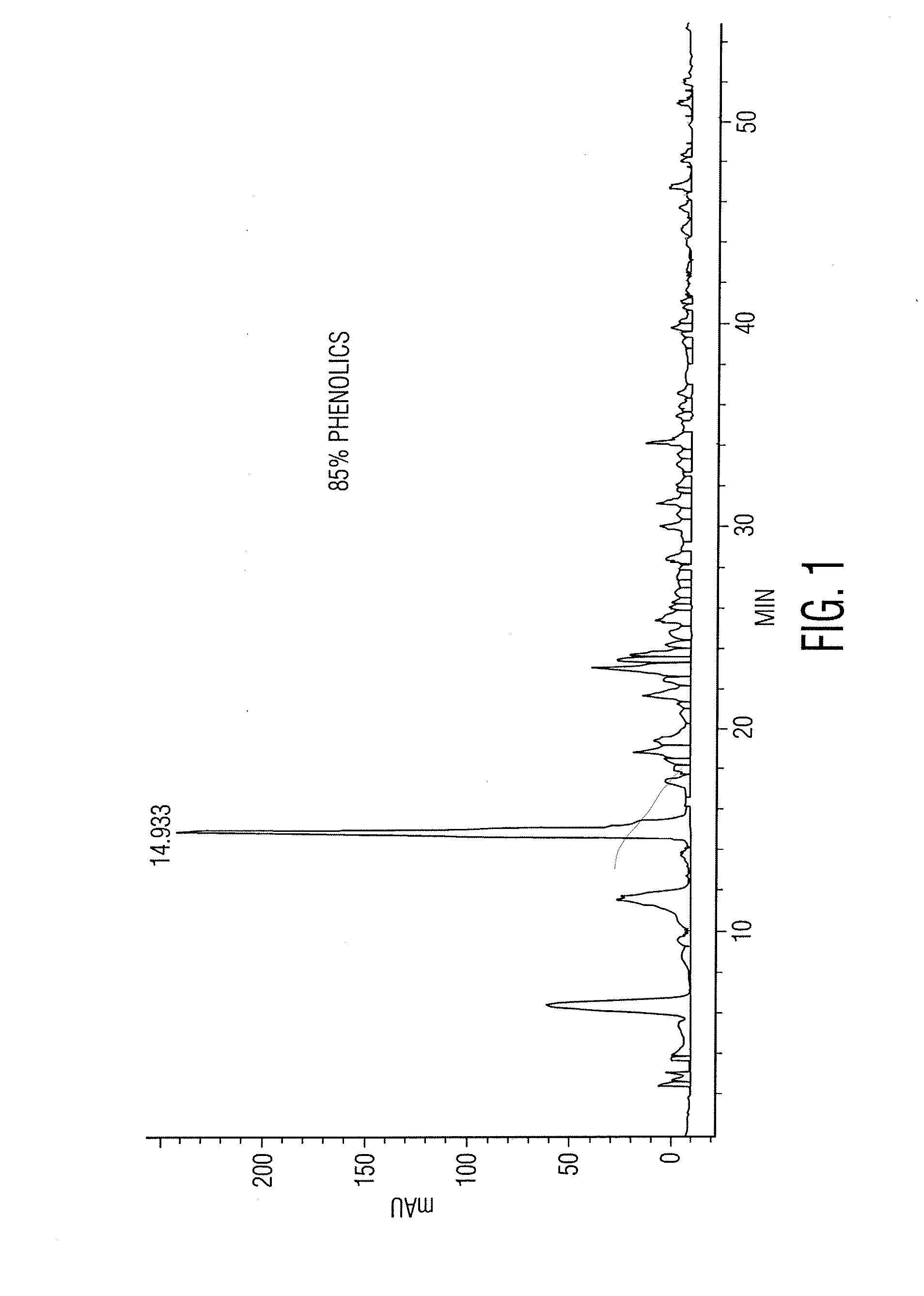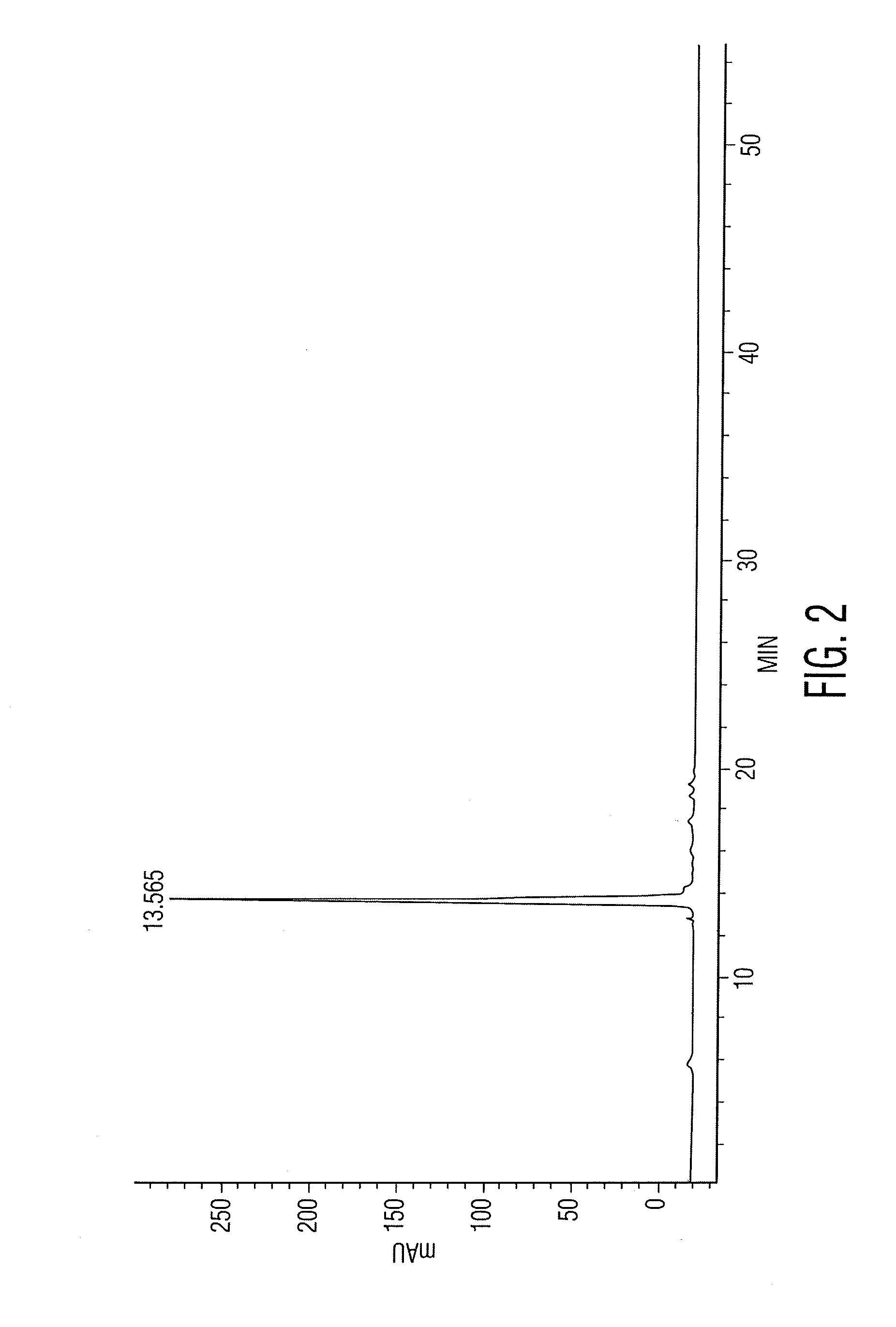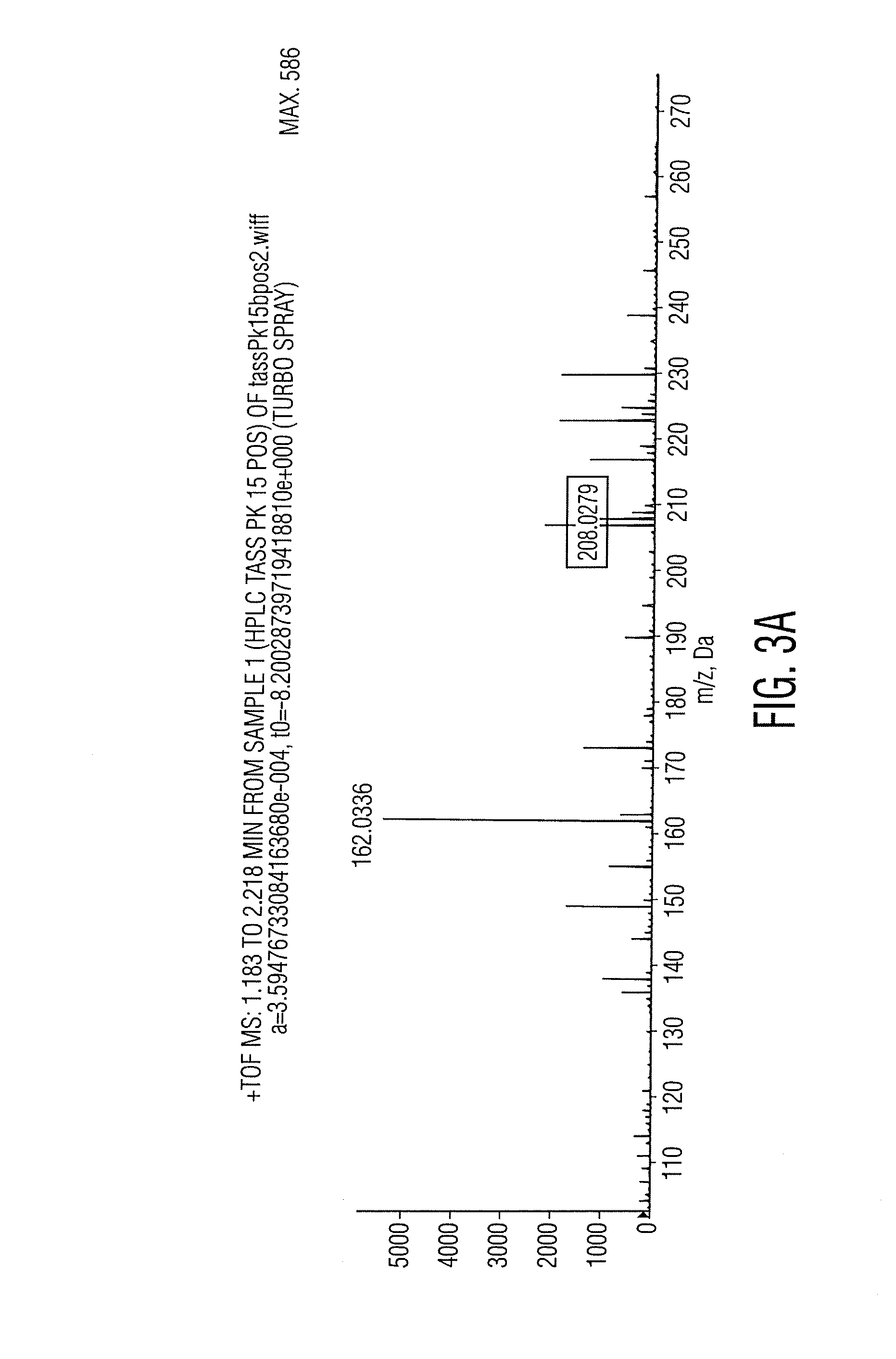Natural skin whitener: 4-hydroxy-oxindole-3-acetic acid
a technology of oxindole and acetic acid, which is applied in the direction of biocide, plant growth regulator, animal husbandry, etc., can solve the problems of discoloration, cancer risk, and unstable hydroquinone in many cosmetic formulations, and achieve excellent tyrosinase inhibitor activity, multifunctional skin benefits, and anti-oxidation.
- Summary
- Abstract
- Description
- Claims
- Application Information
AI Technical Summary
Benefits of technology
Problems solved by technology
Method used
Image
Examples
example 1
[0018]Isolation and extraction of Tasselin A.
[0019]Tassels are the male reproductive organs of the corn plant. Pollen develops and ripens within the tassel in temporal synchrony with the development of ripening female ovarian germ cells at approximately 6-8 weeks after planting. At this stage of tassel development there is a distinctive change in color of the tassels from green to reddish-brown and development of a unique and distinctive aroma. This distinctive aroma persists only during the stage of pollen release (Wille, U.S. Pat. No. 7,399,439).
[0020]Tassels collected in the field at this stage of pollen maturation and release are enriched in scented pollen sacs. These pollen sacs are the starting material for isolation of Tasselin A compound. They are collected simply by shaking the tassels directly into collecting sacks conveyed to the laboratory where they are immersed directly into ice-cold absolute alcohol and extracted for 24-48 hours at 0-4° C. The ice-cold extract is clar...
example 2
Chemical Identification of Tasselin A
[0022]Over the course of several years many different Tasselin A extracts were prepared and examined in collaboration with scientists at the United States Department of Agriculture in Peoria, Ill. A brief abstract of this work was published ([CITE], Wille and Berhow, J. Invest. Dermatol. April, 2009).
[0023]The alcoholic extracts were investigated by the technique of high pressure liquid chromatography (HPLC). A typical chromatographic profile is shown in FIG. 1.
[0024]Area under the curve (AUC) measurements have shown that phenolic compounds comprise greater than 80 per cent of the physical mass chromatographed. Many of which were matched to known phenolic compounds. However, the main component, which consistently eluted at approximately 15 minutes, and which is of interest to this invention was an as yet unidentified compound.
[0025]Positive identification proceeded by first isolating the main phenolic component by taking a “cut” or fraction encom...
example 3
Antioxidant Activity of Tasselin A
[0028]Purified Tasselin A has been assayed and determined its free-radical scavenging activity. FIG. 4 present typical results of standardized 1,1-diphenyl-2-picrylhydrazyl radical (DPPH*) reagent test as previously described (Bonina et al, 2002). This test was previously disclosed and employed on crude corn tassel alcoholic extracts (Wille J J: U.S. Pat. No. 7,399,439). Here we confirm that purified Tasselin A has potent antioxidant activity. A 1.0 mg / ml stock solution of purified Tasselin A in ethanol was diluted with anhydrous ethanol to a final concentration of 100 microgram per milliliter and assayed in the DPPH* free-radical scavenging assay. As shown in FIG. 4, there was a 40% reduction in absorbance measured at 595 nm, indicating that Tasselin A has good anti-oxidant activity.
PUM
| Property | Measurement | Unit |
|---|---|---|
| molecular weight | aaaaa | aaaaa |
| concentration | aaaaa | aaaaa |
| concentration | aaaaa | aaaaa |
Abstract
Description
Claims
Application Information
 Login to View More
Login to View More - R&D
- Intellectual Property
- Life Sciences
- Materials
- Tech Scout
- Unparalleled Data Quality
- Higher Quality Content
- 60% Fewer Hallucinations
Browse by: Latest US Patents, China's latest patents, Technical Efficacy Thesaurus, Application Domain, Technology Topic, Popular Technical Reports.
© 2025 PatSnap. All rights reserved.Legal|Privacy policy|Modern Slavery Act Transparency Statement|Sitemap|About US| Contact US: help@patsnap.com



